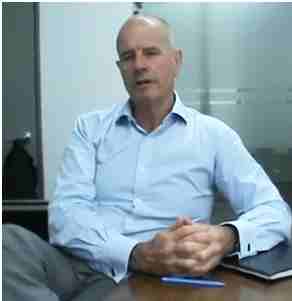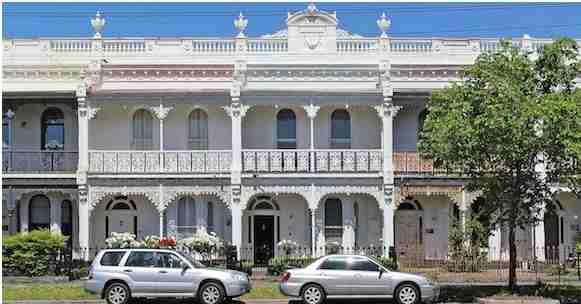Melbourne, July 29: Would a real estate professional know?
Maybe, given that they are an everyday witness to the market swings and inner workings of the industry itself.
Malcolm Gunning, of Gunning real estate agency agency branded young seekers in the housing market as “generation selfish”, who refused to live in the suburbs or give up on their widescreen TVs, Netflix, fashionable clothes and craft beer.
Citing examples of the last generation of dairy farmers, miners and other blue collar workers in regional New South Wales, who would happily take small steps to get a footing in the housing market, Mr Gunning said they all owned their own homes.
Mr Gunning called for the younger generation to emulate the frugal habits of past generations and sacrifice eating out to save towards their first smaller home.
“More and more we are seeing a victim mentality associated with the high cost of property, yet this ‘generation selfish’ sees widescreen TVs, designer clothes, international holidays and eating out as everyday essentials.
“They simply won’t do what is necessary to cut their lifestyle in order to save a deposit,” he said in the statement.
 Baby boomer, Mr Gunning’s call coincided with a new report from The University of Melbourne’s Household, Income and Labour Dynamics in Australia (HILDA) survey showing that home ownership rates among the young continue to fall.
Baby boomer, Mr Gunning’s call coincided with a new report from The University of Melbourne’s Household, Income and Labour Dynamics in Australia (HILDA) survey showing that home ownership rates among the young continue to fall.
The HILDA Survey initiated and funded by the Department of Social Services found that elderly couples are the wealthiest households in Australia
Couples over 65 fared the best, experiencing a real increase in median net wealth of almost 70% since 2002, according to this comprehensive household survey.
Professor Wilkins of University of Melbourne Institute said that the high cost of real estate was putting pressure on the younger generations, while older generations benefited from the large increases in house values.
“Between 2001 and 2014, owner occupied houses have declined by 3.5 percentage points. That translates to 700,000 Australian homes,” said Professor Wilkins.
“It is likely that in the next few years less than half of adults will be home-owners.”
The HILDA survey found that home ownership rates among under-55s fell with the youngest bracket of 25-34s recording almost 10 per cent fall, from 38.7 per cent in 2002 to 29.2 per cent in 2014.
35-44 year olds registered a fall from 63.2 per cent to 52.4 per cent.
Mr Gunning claims that falling numbers are due to laxity in most young Australians.
“If you were serious about buying a house, you would compulsively save and you’d have to cut things out of your life, he told New Daily.
“And that’s what took place when I first left school and got married. Entertainment for most of us was either a beer at the pub or a barbecue in the backyard with your mates.”
To add to the controversial housing affordability versus the generation Y’s willingness case, Dr Stephen Koukoulas, former advisor to Julia Gillard, in his book Myth Busting Economics wrote:
“While house prices are up, so too are household incomes and, critically, interest rates are structurally down,” he wrote.
“This shows, quite starkly, that it is no tougher financially for a first home buyer today to service an average mortgage on an average house than it was 20 or 30 years ago.”
The Australian Bureau of Statistics (ABS) statistics also record a decrease in ownership rates, and increasing rates of renting in Australia.
Mr Gunning calls for the younger generation to aim low rather than play the victim.
It is the case of “Skewed Judgement”, according to Mr Gunning, who believes that many young Australians are “city dwellers” and aim too high for their first home. Thus their ‘affordability’ judgement is skewed.
Yet, corresponding data simultaneously show a rise in the cost of housing as a percentage of household income with 5.7 per cent households now spending 50 per cent or more on housing, comparing to 4.6 per cent in 1994-95.
Simultaneously, 80.3 per cent households, who were spending 25 per cent or less on housing in 1994-95 fell to 75 per cent in 2013-14.
Professor Roger Wilkins who authored the HILDA report found that the gap between high and low earners is gradually widening.
And amidst all this, the Organisation for Economic Co-operation and Development (OECD) has warned of ‘dramatic and destabilising’ drop in Australian property prices
The sharp rise in the construction of new apartments and record number of apartments due for completion major cities over the next 18 months may be the catalyst for Gen Y.
Nidhi Mehta
Similar Posts by The Author:
- Supriya Shrinate delivers Kangana Ranaut a huge advantage
- The Mahua Moitra saga – Is she a victim for Shashi Tharoor to save?
- Election 2022: Matthew Guy is closing in on Daniel Andrews
- Harry and Meghan claims: Queen responds but the Today team is divided
- Alleged Hindu phobia gets Rinku Sharma killed in India

